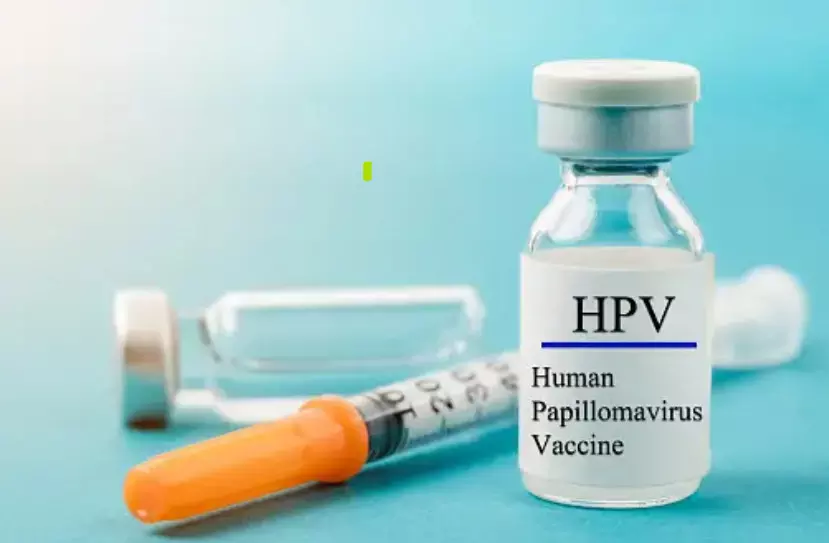Prevention as the cure
Awareness around timely screening, safe sex, and preventive vaccination is the best bet to deal with the widely prevalent Human Papillomavirus that can even cause cancer

Human Papillomavirus (HPV) is the causative agent behind a majority of sexually acquired infections. HPV has more than 100 variants. Among these, 13 variants are known to be oncogenic i.e., cancer-causing. HPV 16 and 18 are responsible for around 70 per cent of cervical cancer cases. Few HPV variants are known to cause benign lesions in the form of genital warts or oral lesions. As it is transmitted via skin-to-skin and sexual contact, the body parts most commonly infected are the cervix, vagina, vulva in females and the penis, and scrotum in males. Other areas which can be affected are the rectum, anus, mouth and throat. In all these areas, HPV infection can reside for years, causing cancerous changes gradually. It has been estimated that at least 75-80 per cent of adults will get infected with one type of HPV before the age of 50 years.
New HPV infection requires 20-25 years to turn cancerous. Worst is that in all the above-mentioned affected areas (except cervix where precancerous lesions can be detected due to presence of screening tests), the disease is usually detected at cancerous stage.
Cervical cancer is the second most common cancer in women, and is one of the most common causes of death due to cancer in developing countries. Indian women face a cumulative lifetime risk of 2.5 per cent of developing cervical cancer and 1.4 per cent cumulative death risk from it.
Screening tests are available for detecting precancerous and cancerous lesions of the cervix. These include PAP’s test, with or without HPV testing. These tests are performed by health professionals, and have to be performed every 3-5 years starting from the age of 21 years till 60 years of age.
The majority of the people who get infected with HPV are asymptomatic and are even unaware of the presence of the infection. In nearly 10-20 per cent of females, HPV infection stays and causes dreaded symptoms.
There exist few risk factors for acquiring HPV infection and getting affected. These are:
⁕ Poor personal hygiene;
⁕ Low socioeconomic status;
⁕ Multiple sexual partners;
⁕ Early marriage and early child-birth;
⁕ Immunocompromised state i.e., HIV infection, on chronic steroid therapy, uncontrolled diabetes;
⁕ Smoking, tobacco use.
There is no cure for HPV once infected. But definitely, there are preventive measures available. Easiest preventive measure is safe sex. Use of condom can prevent not only HPV infection, but also other sexually transmitted diseases and unintended pregnancies. Another preventive measure is undergoing screening to detect precancerous lesions of the cervix in the form of PAP’s smear testing, with or without HPV testing.
Another option, which the majority of us are not aware of, is the presence of the HPV vaccine. It does not treat existing HPV infection, but protects the individual by building immunity against HPV when administered pre-exposure. There are three types of vaccines available globally: Gardasil, Gardasil-9 and Cervarix. In India, Gardasil and Cervarix have been available since 2008. Gardasil vaccine offers protection against genital warts and cervical cancer and Cervarix provides protection against cervical cancer. The recommended age group for vaccination is 9-12 years for girls. Two dose regimen is given to girls who start their vaccination before the age of 15 years at an interval of 6-12 months. Three doses (0,2 and 6 month) are to be taken over a period of 6 months for the age group above 15 years. It’s recommended that vaccination should be completed before the sexual activity starts. Adults up to the age of 26 years can get vaccinated if not covered with the vaccine prior.
Recently, Gardasil-9 was also introduced in India and is recommended for both girls and boys in the age range of 9-26 years and 9-15 years respectively, in 3 dose regimens, over a period of 6 months.
Vaccines are both safe and effective. HPV vaccine not only proves effective for females who get vaccinated against oncogenic HPV virus, but even protects their male partners.
In India, increasing awareness regarding the availability of vaccines should be the priority. More so because of non-availability of uniform cervical cancer screening facilities. It should be introduced to parents as a cancer-preventing vaccine with the help of the media and in pediatrics OPD's.
Parents of young girls should consult the pediatricians and ensure that vaccination is done against this notorious virus. The most important issue regarding universal acceptance of this vaccine is the cost of the vaccine, as it is not a part of the National Immunization Programme.
Attempts are underway to make it cost-effective for mass utilization in India and to effectively use HPV vaccine as a primary prevention entity. Even studies are underway for a single dosing regimen for HPV vaccine. Till then, all attempts should be to increase awareness regarding the available effective secondary prevention measures i.e., screening via PAP and HPV testing. The readers are requested to disseminate the information in an attempt to reduce the prevalence of HPV infection and diseases caused by the virus.
Views expressed are personal



